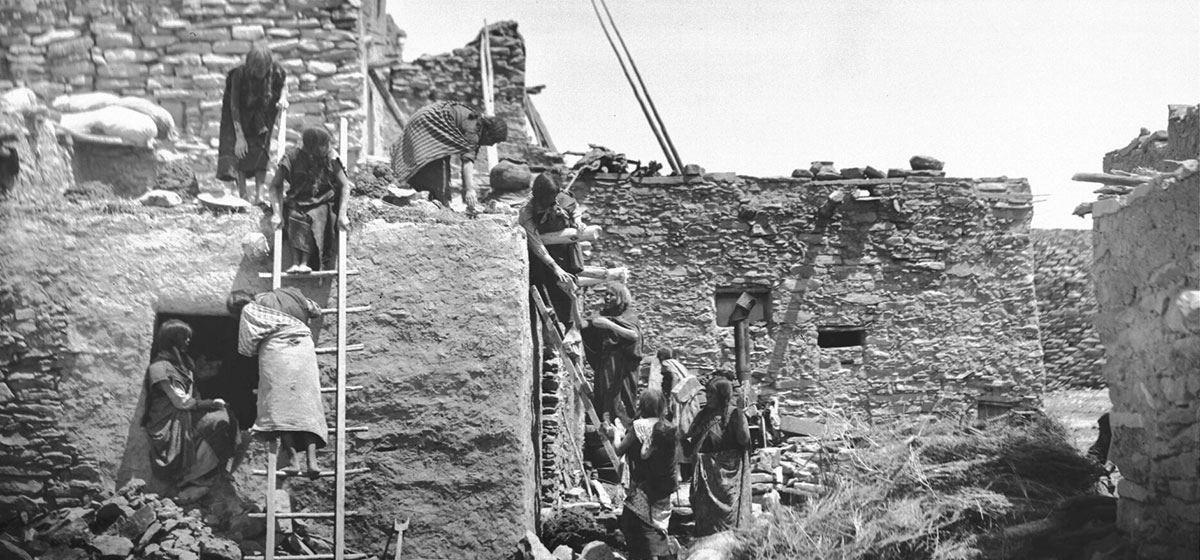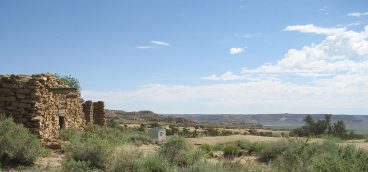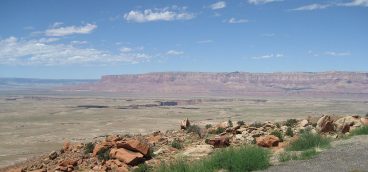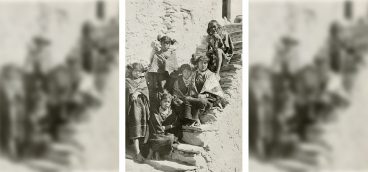Abbott Sekaquaptewa: The Man Who Asked for Help

One day, innocently sitting at my desk and annoying no one, I opened a long letter from a guy named Abbott Sekaquaptewa, who seemed to be the Chairman of the Hopi Indian Tribe (as they were known in those days).
As I read through Abbott’s letter I became more and more befuddled. He seemed to be asking me to travel to the Hopi Reservation, situated in the Four Corners area of Arizona—i.e., in the middle of nowhere—to help his tribe in a dispute with the Navajo tribe and a bunch of powerful corporations.
Up to that point in my life I’d never actually heard the word “Hopi,” and I was, needless to say, nonplussed by Abbott’s letter. But then, focusing on the “powerful corporations” part of the letter, I had an idea. I called a friend of mine, Jack Moore, who was Executive Vice President of Southern California Edison Company, and said, “Jack, did you ever hear of someone called Abbott Sekaquaptewa?”
When Jack finished laughing, which took a while, he told me he was very sorry to have given Abbott my name and address, but that the Hopi really, really needed help. Worse, the Hopi didn’t trust white people, so getting help was no small challenge. However, it turned out that the Hopi did trust the Mellon family, for whom I happened to be working.
“Why the hell would they trust the Mellons?” I naturally asked.
It turned out that, long before my time, the Mellon family had backed a movie about the Hopi Tribe and the Hopi had loved it. Abbott himself had seen the movie many times.
If I’d had any sense I would have written Abbott a nice letter telling him how much I would love to help, but unfortunately I was leaving for Kazakhstan and would be there for many decades. But to make a long story short, I flew to Phoenix, drove up to Flagstaff for lunch, then headed over to the Hopi reservation, about two hours away.
I met Abbott at the Hopi Tribal Office in Kykotsmovi Village. Although I had spent many hours in the library reading up on the Hopi, Abbott assumed I knew nothing. He told me that, before he explained the Hopi’s current predicament, I needed to understand something about the history and culture of the tribe.
That history is interesting and important—not just to the Hopi, but to all of us—so I’ll pause here and fill you in.
According to Hopi legend, the Hopi originated when the Earth Mother gave birth to them. In return for the gift of life, the Hopi were obligated to take care of the Earth Mother, never harming the natural world in any way, living in a sustainable manner and in harmony with nature.
The Hopi are a very ancient tribe, an offshoot of the Pueblo people like the mysterious Anasazi. They seem to have migrated north to Arizona from Mexico about the time Christ was born, and they have lived on the mesas in the Four Corners area ever since. Indeed, the Hopi village of Old Oraibi is believed to be the oldest continuously inhabited place in North America.
During its early years the tribe was much like other tribes of the time, existing in a wandering hunter-gatherer mode. But once they arrived in the mesa area of Arizona they settled down and developed a remarkably unusual culture.
The word “Hopi” means “the peaceful ones,” and the Hopi Dictionary defines the word as meaning “civilized, peaceable … in contrast to warring tribes that subsist on plunder.”
For centuries the Hopi lived in splendid isolation on the bleak mesas. They developed a charming, matriarchal culture based on monogamy and matrilineal descent that tried to live harmoniously with the natural world and which abhorred violence of any kind.
Hopi society also practiced matrilocal residence—when a man married a woman outside his clan (as he had to do), he moved in with his wife’s people. Each Hopi village was divided into as many as a dozen matrilineal clans (the Sun Clan, the Bear Clan, etc.), arranged into larger social units, or phratries (in anthropological terms).
All this was terrific as long as there were no other humans around. And for a long time there weren’t any—who, after all, wanted to live on windswept mesas that, in a good year, might get 10 inches of rain?
But, as we know, stuff happens. Climate change, population pressure, and the casualties of war all combined to push other tribes into the Four Corners area, and suddenly the Hopi found themselves confronted by far more aggressive cultures.
Gradually, and then quickly, the Hopi were pushed back from their traditional lands. Since the remaining lands couldn’t support the Hopi population, that population collapsed. It looked like curtains for the gentle Hopi, but then they had a stroke of luck—or genius.
The Hopi heard of a tribe that was, in effect, their exact opposite—a tribe that gloried in war and battle, whose very name meant “the courageous ones.” So addicted to warfare was this tribe that they had little time for other important activities—farming and hunting, for example. As a result, during difficult winters many tribe members starved to death.
We don’t know who this tribe was, but it seems likely that it was one of the many Apache tribes that lived in the Southwest, so that’s what I’ll call them. (“Apache,” by the way, is a Spanish/Mexican word meaning “enemy.”) The Hopi approached the Apache and made them a proposition. “Move to the mesas and live near us,” said the Hopi, “and we will supply everything you need to live—food, water, shelter. In return, you will protect us from our hostile neighbors, doing our fighting for us since we’re no good at it.”
The Apache accepted this offer, and the near-death experience of the Hopi was forestalled, as the Apache proved very effective at making war against the local tribes.
But there was a problem. The Hopi despised the Apache, whose warlike culture represented everything the Hopi stood against. During the several hundred years that the Apache protected the Hopi, not one Hopi ever learned to speak Apache (even though all the Apache spoke Hopi). If a Hopi girl fell in love with an Apache boy, her family disowned her, cast her out and thereafter lived as though the girl had never existed.
We’ll see how this worked out next week.
Next up: Abbott Sekaquaptewa, Part II





